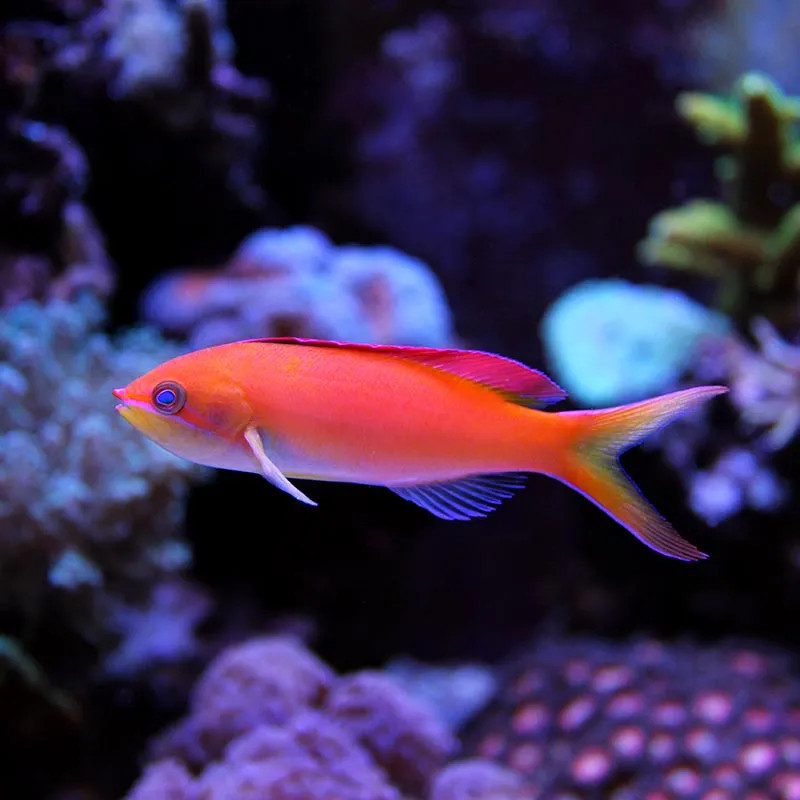Introduction
- Species: Dispar Anthias (Pseudanthias dispar)
- Common Names: Peach Anthias, Madder Seaperch, Dispar Anthias
- Natural Habitat: Found in coral reefs across the Indo-Pacific, particularly around Indonesia, Fiji, and the Maldives.
Physical Characteristics
- Appearance: Displays a slender body with a stunning blend of peach to pinkish-orange coloration; males often feature brighter colors with a distinct lavender-blue edge along the dorsal fin.
- Size: Typically grows to about 3-4 inches (7.5-10 cm) in length.
- Lifespan: Lives 3-5 years in captivity with proper care.
Habitat Requirements
- Tank Size: Minimum of 70 gallons, with extra space encouraged for schooling groups.
- Water Conditions:
- Temperature: 72-78°F (22-26°C)
- pH: Slightly alkaline, around 8.1-8.4
- Aquascaping: Include live rock structures for hiding and open areas for schooling; low lighting mimics their natural reef environment.
Diet
- Primary Diet: Planktivorous, feeding primarily on zooplankton in the wild.
- Supplemental Feeding: Feed a varied diet of high-quality marine pellets, mysis shrimp, copepods, and other planktonic foods.
- Feeding Frequency: Multiple small feedings throughout the day, to mimic natural grazing habits.
Compatibility
- Temperament: Peaceful and social; thrives in groups that allow natural schooling behavior.
- Suitable Tank Mates: Other peaceful reef fish like gobies, tangs, and wrasses.
- Incompatibilities: Avoid aggressive or highly competitive feeders, which may stress them or impact their access to food.
Care Level
- Difficulty: Moderate; requires stable water quality and frequent feeding.
- Health Monitoring: Watch for signs of stress, including color loss or decreased appetite, and maintain excellent water conditions to prevent disease.
Breeding
- Breeding in Captivity: Rarely achieved due to specific spawning behaviors.
- Spawning: Males perform courtship displays at dusk, although successful spawning in aquariums is uncommon.
Economic Considerations
- Market Demand: Popular in the saltwater aquarium trade for their colors and schooling behavior.
- Wholesale Pricing: Mid-range, depending on availability and coloration.
- Retail Pricing: Prices vary, with males often commanding a premium due to their brighter coloration.
Sustainability and Conservation
- Wild Population: Generally stable, though collection may impact certain reefs.
- Aquaculture Efforts: Limited success in breeding; most available specimens are wild-caught.
- Regulations: Follow local and international guidelines to support sustainable marine fishkeeping practices.
Conclusion
The Dispar Anthias Male is a beautiful and peaceful fish that enhances reef aquariums with its vibrant colors and graceful schooling behavior. With appropriate care and tank conditions, it can thrive and bring life to a well-maintained marine setup.
